 This is a really interesting season for the Boston Celtics. Fresh off an improbable – and for some fans, unforgivable – playoff run, the Celtics are looking at what might be a quicker-than-anticipated rebuild.
This is a really interesting season for the Boston Celtics. Fresh off an improbable – and for some fans, unforgivable – playoff run, the Celtics are looking at what might be a quicker-than-anticipated rebuild.
Think of this Celtics team as a hurricane brewing in the Atlantic Ocean. They are at that early stage where the meteorologist tells us, “It’s trying to get its act together, and if it does, it could develop into a big storm.”
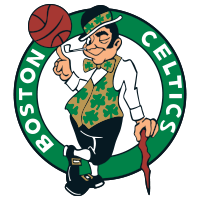 Sometimes those become Category 5 monsters. Sometimes they fizzle out. However it turns out over the next few years, the conditions are still right for the Celtics: They have some good supporting players who – alongside a couple of superstars – can really contribute. They have a lot of cap room to sign a star over the next couple of years (yes, so does most everyone else) plus the assets necessary to at least contend for one in a trade. They also have coach Brad Stevens, who, in two years has impressed the entire NBA with his dogged preparation, game management, and ability to get the most of his team.
Sometimes those become Category 5 monsters. Sometimes they fizzle out. However it turns out over the next few years, the conditions are still right for the Celtics: They have some good supporting players who – alongside a couple of superstars – can really contribute. They have a lot of cap room to sign a star over the next couple of years (yes, so does most everyone else) plus the assets necessary to at least contend for one in a trade. They also have coach Brad Stevens, who, in two years has impressed the entire NBA with his dogged preparation, game management, and ability to get the most of his team.
Just like the still-forming hurricane, the Celtics still need a few things to happen to make it all come together, and there’s no guarantee that any of it will. But the possibility exists, which makes this a pivotal season for them. The road to prominence is within sight. But so is the road that gets the franchise lost in a maze of overreaches and missed calculations. These five things could decide which turn the Celtics take moving forward.
1. The big man battle
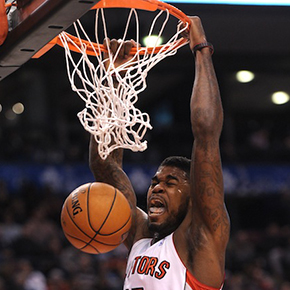 The Celtics already have Jared Sullinger, Kelly Olynyk and Tyler Zeller. They brought in Amir Johnson (free agency) and David Lee (trade), and they’re taking chances on Perry Jones (trade) and Jordan Mickey (draft). Each guy brings his own strengths to the party, giving analysts at least some plausibility to argue for their playing time. And, oddly, only Mickey – a second-round pick – has a guaranteed salary for next season, so there are no contractual hints as to whom might win playing time. (Sullinger and Zeller are due qualifying offers; the team holds an option on Olynyk; Johnson’s $12 million for 2016-17 is not guaranteed; and Lee’s contract expires after this season.)
The Celtics already have Jared Sullinger, Kelly Olynyk and Tyler Zeller. They brought in Amir Johnson (free agency) and David Lee (trade), and they’re taking chances on Perry Jones (trade) and Jordan Mickey (draft). Each guy brings his own strengths to the party, giving analysts at least some plausibility to argue for their playing time. And, oddly, only Mickey – a second-round pick – has a guaranteed salary for next season, so there are no contractual hints as to whom might win playing time. (Sullinger and Zeller are due qualifying offers; the team holds an option on Olynyk; Johnson’s $12 million for 2016-17 is not guaranteed; and Lee’s contract expires after this season.)
The Celtics’ system might allow for Olynyk to step ahead of the crowd because he is a stretch-5 with the potential to hit threes above and below the break while also penetrating and finding teammates. Of course, the key word is “potential,” and this may be the last season of trying to coax the level of aggression out of him necessary to reach it.
Sullinger can also be a stretch big, but the team is clearly worried about his weight, which was seen as a contributing factor to a stress fracture that nearly ended his campaign last season. He also is right on the cusp of being inefficient from deep, so he will need to improve both his conditioning and his shooting to show he is worthy of becoming a part of this team’s future.
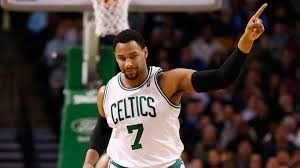 From there it gets hazy. Zeller can run the pick-and-roll pretty well and has a good mid-range game. He is a smart player I can see as a part of the bench moving forward. Mickey enticed people in Summer League with his knack for blocking shots, but that comes with the obvious caveat that he has yet to face actual rotation players.
From there it gets hazy. Zeller can run the pick-and-roll pretty well and has a good mid-range game. He is a smart player I can see as a part of the bench moving forward. Mickey enticed people in Summer League with his knack for blocking shots, but that comes with the obvious caveat that he has yet to face actual rotation players.
Johnson and Lee are really interesting – and a bit confusing. I can see Johnson being the motor of this frontcourt and the “hustle” guy that provides energy during lulls in games. Stevens can toss him out there with Jae Crowder and Isaiah Thomas and watch the amp meter fly off the charts. But Stevens is a “pace and space” guy, and I’m not sure Johnson is a big-minutes player in that style.
Lee is the biggest question. He makes total sense in the context of getting out of the Gerald Wallace deal one year early. The team saved a few million bucks in the process, but they also seem to have convinced Lee that he is in Boston to play and contribute to a winner. When it comes to sheer talent, Lee is the best player of this bunch. But there remains his inability to step out beyond the arc or defend anyone effectively, which Boston really wants from guys in this spot. There is no pace without frontcourt defense, and there is no space when opposing bigs don’t have to respect the 3-pointer. So I wonder if Lee is going to last the whole season in Boston.
Which brings me to ….
2. In-season trades
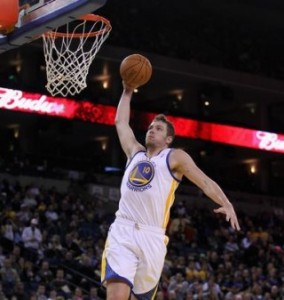 I feel like Lee is the prime candidate to get moved. This assumes that he is at least somewhat effective and could be seen as a better fit in a different system.
I feel like Lee is the prime candidate to get moved. This assumes that he is at least somewhat effective and could be seen as a better fit in a different system.
Even if it isn’t Lee, someone has to go. The roster is already too full with 16 guaranteed contracts for 15 spots, but aside from usual camp cuts, the Celtics are in position to be very active by the trade deadline. We know from last season, when seven separate trades were made between October and February, that Danny Ainge is not afraid of pulling the trigger on a deal. With a lot of work still left before the Celtics are actual contenders, Ainge may be similarly inclined to dangle one and all as trade bait.
There are common threads in every NBA season. We know some team we expected to be good will flounder, and some team that was supposed to stink will surprise. There are teams with plans that fall through, and there are opportunists who scoop up players like professional flea market shoppers snag bargains from people down on their luck.
RELATED: Celtics salaries and analysis
Ainge loves finding a good deal, and as the Isaiah Thomas deal proved last season, he will do it even if doesn’t fit the original plan. He got Thomas for essentially nothing, and the wins he brought cost the team a lottery pick. Some GMs might have stuck to the plan – which was to lose – but Ainge was too enticed by a quality player on the clearance rack. Ainge will make every deal he feels makes the team better in the long run. Depending on how some guys play, he might have plenty to offer should a team decide it wants to unload quality veterans.
3. Marcus Smart as point guard
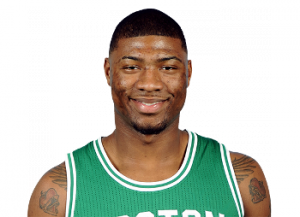 Smart’s sophomore season finds him as the team’s full-time starting point guard entering the campaign. His job seems pretty safe when you consider Thomas is very likely going to stay on the bench and Avery Bradley is in no way an NBA point guard. Still, the team will be evaluating whether Smart is the actual long-term solution in the post-Rajon Rondo era. He will have plenty of leeway to make his mistakes and grow into the position.
Smart’s sophomore season finds him as the team’s full-time starting point guard entering the campaign. His job seems pretty safe when you consider Thomas is very likely going to stay on the bench and Avery Bradley is in no way an NBA point guard. Still, the team will be evaluating whether Smart is the actual long-term solution in the post-Rajon Rondo era. He will have plenty of leeway to make his mistakes and grow into the position.
Smart is an interesting player. He’s not afraid to shoot and fits right in with today’s type of scoring point guard. But I consider him the poster child for today’s 3-point happy mentality.
The analytics show shooting 30 percent from 3 is like shooting 45 percent from 2, and Smart is right at that line. He will shoot enough from deep to make you wonder why he is so in love with that shot, and he will finish with a percentage juuuust high enough for the numbers to justify it. Your eyes tell you to yell at him for shooting so many threes, but the analytics show it’s not so bad.
But that’s not what Boston wants from its primary ball handler. If Smart is going to be the big-shooting-type of point guard, he is going to have to be better than average. He can’t be the subject of constant debate.
One other thing Smart needs to do more of this season is attack the basket. He suffered a pretty bad ankle injury last season that might have made him hesitant to attack, but part of the efficiency of a scoring point guard is the ability to get to the rim and finish. This may be more important than the long-range shooting, because fans could learn to live with 33 percent from the arc if Smart is mixing in a few drives to keep pick-and-roll defenders honest. If Smart is just going to chuck from long distance, he is going to hurt his teammate by making them easier to defend.
4. The impact of the rookies
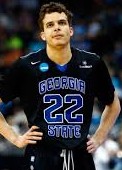 Ainge tried to trade its picks away on draft night. He really did. Plan A wasn’t to draft Terry Rozier and R.J. Hunter.
Ainge tried to trade its picks away on draft night. He really did. Plan A wasn’t to draft Terry Rozier and R.J. Hunter.
But none of his trade attempts panned out, and the Celtics had to make their picks. Now the question is whether they got lucky when they were rebuffed and picked up some potential contributors.
At 16, Rozier was their higher pick, but I think his skill set is too similar to better players who will get minutes ahead of him. But Smart and Isaiah Thomas can both be very aggressive on the court, which makes them injury risks, so it will be interesting to see if Rozier is thrust into early emergency service.
Remember – and I cannot stress this enough – Bradley is not a point guard. He can be an elite defender and will drop the occasional 20-point game but is in no way a ballhandler. So Rozier might be pressed into emergency service at the point ahead of Bradley.
RELATED: Pete Newmann with everything you need to know about the Celtics
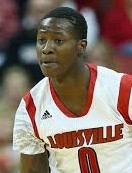 Hunter needs to get stronger and better at defense. But he also is the classic “in range as soon as he steps into the gym” type of shooter. His skills might be good enough to get into spread-the-floor or need-threes-in-bunches situations. Hunter also is a very underrated passer, so there might be added comfort with putting him in those spots because he is smart enough to make a play for someone else.
Hunter needs to get stronger and better at defense. But he also is the classic “in range as soon as he steps into the gym” type of shooter. His skills might be good enough to get into spread-the-floor or need-threes-in-bunches situations. Hunter also is a very underrated passer, so there might be added comfort with putting him in those spots because he is smart enough to make a play for someone else.
There’s the previously mentioned Mickey, this year’s summer league standout that has a lot of people buzzing. He showed great instincts and jumping ability in July, but we have seen way too many July performances fail to be duplicated after the summer is over. Still, the Celtics are lacking in shot-blocking, so Mickey will have an opportunity to earn his way into a rotation based solely on that skill and his athleticism to finish breaks he starts on the defensive end.
5. The Brooklyn Nets
 Next year brings to Boston three years of rights to Brooklyn’s draft picks: unprotected first-round picks in 1016 and 2018, plus the right to switch places in 2017 as part of the Pierce/Garnett trade). So Celtics fans should be rooting for any possible dysfunction and misfortune to befall the Nets.
Next year brings to Boston three years of rights to Brooklyn’s draft picks: unprotected first-round picks in 1016 and 2018, plus the right to switch places in 2017 as part of the Pierce/Garnett trade). So Celtics fans should be rooting for any possible dysfunction and misfortune to befall the Nets.
This puts Boston in a very unique position this season where fans can openly root for the team to reach it’s middle-of-the-pack ceiling without worrying about the trappings of being a mediocre squad. The Celtics can make their run at a sixth seed without having last season’s argument about where their draft pick falls – as long the Nets are terrible and doing our lottery bidding for us.
Boston wants Brooklyn to go in as many different directions as Lionel Hollins’ fingers. Iso-Joe Johnson should go 1-on-5. Jarrett Jack can crumble under the weight of trying to run a show. Brook Lopez can butt heads with everyone. Andrea Bargnani can be … well, he can just be Bargs.
Brooklyn’s roster looks pretty messy, and there’s no way the Nets should be any good at all. The only fear in Boston is that they can create some kind of weird chemistry in a weak Eastern Conference and don’t stink enough to accomplish the Celtics’ tank-by-proxy mission. Brooklyn shouldn’t be very good, but there’s no doubt Celtics fans will be as invested in Nets losses almost as much as they are invested in Boston wins.
The patience meter isn’t quite on E yet, but it’s at less than half a tank and varies depending on whom you ask. The Celtics needs to show some tangible growth this season for fans to remain confident that they will return to legitimate contention in the next few years, or fans will run out of that patience pretty quickly.
READ EVERY SEASON PREVIEW WITH OUR TEAM INDEX
John Karalis is the co-founder of RedsArmy.com. He is also a frequent contributor to many other NBA outlets and radio broadcasts. You can follow him on Twitter @RedsArmy_John